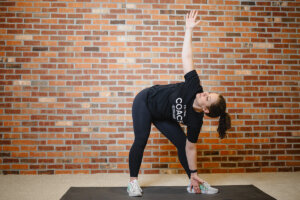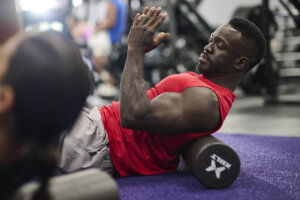It’s well-known that cardio is an important part of any fitness regimen, but that doesn’t just mean hopping on the treadmill or elliptical every time you’re in the gym. After all, incorporating a variety of movement types is critical to a balanced routine.
Tired of the same old cardio sessions? We hear you, and we’ve got a solution: jumping rope. It’s not just a fun activity for kids — it’s also a killer workout. It could be time to add a jump rope to your cardio toolkit, whether your goal is weight loss and toning or building strength.
4 benefits of jumping rope
Sure, jumping rope gives you cool skills to show off to your gym buddies, but the benefits don’t end there. Here are four more reasons to incorporate jump rope exercises into your fitness routine.
1. Jumping rope is versatile
Jumping rope is an incredibly versatile exercise because it only requires two pieces of equipment: a jump rope and a sturdy pair of shoes. That means you can knock out an intense workout anywhere, anytime.
Plus, there’s always something new to learn and master with the wide variety of moves, from the basic jump to the crisscross or mummy kicks. Bonus: More advanced movements will give you a mental workout at the same time.
You can use a jump rope as part of your warm-up or cooldown — or as a full HIIT workout, depending on the specific exercises and intervals.
2. Jumping rope can help your heart
3. Jumping rope improves coordination, balance, and speed
Learning more advanced jump rope exercises can help improve your hand-eye coordination — not to mention, the repetitive jumping movements help stabilize your knee and ankle joints, improving balance and stability over time.
A 2020 study also suggested that warming up for a run with a jump rope may improve running speed. Looking to improve your mile time? Try picking up a jump rope!
4. Jumping rope can boost your bone health
Studies have also shown that regular jump rope training can improve bone density, reducing the risk of injury or osteoporosis, which makes bones fragile and more likely to break.
Jump rope tips
Before you get started, it’s important to find a rope that’s the right length for your height (as a general rule of thumb, a 6-foot-tall person should use a 9-foot rope). Here’s how to choose:
- Stand with your feet in the middle of the rope.
- Pull the handles all the way up at your sides.
- If the rope is the right length, it should reach your armpits.
Next, you need to make sure you’re using proper footwear. Check out our tips for finding the perfect shoe for the gym.
Finally, keep these form tips in mind as you begin jumping:
- You only need to jump 1–2 inches off the ground to complete most jump rope exercises. Jumping too high can cause strain on your joints and increase your risk of injury.
- Keep your arms steady while you jump — most of the rope movement should come from your wrists, while your shoulders and elbows stay relaxed.
- Keep your elbows close to your ribs while you jump; this will help you stay in control of the rope.
Beginner jump rope exercises
Ready to give it a try? Let’s do it!
If you’re new to jumping rope, start slow. Try completing a 5-minute session three to five days a week, and listen to how your body feels. After that, you can work your way up to longer sessions of 15–30 minutes.
Here are four basic jump rope exercises to try during your next warm up or gym session.
Basic Jump
Most beginners start with the basic jump before working up to more advanced moves.
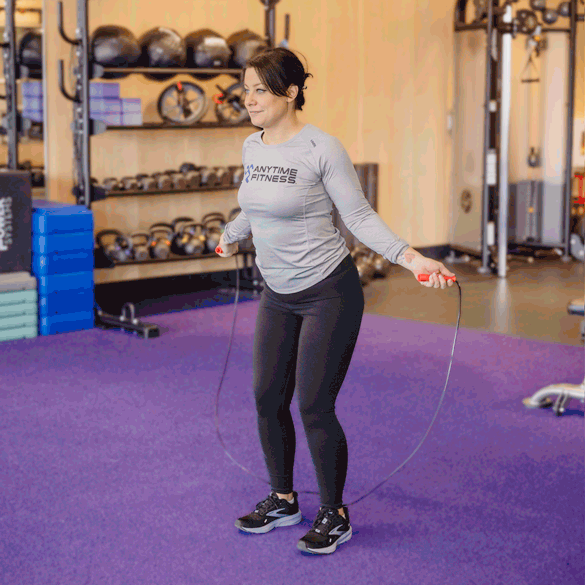
Here are the fundamental steps for the basic jump:
- Stand with your feet together, with a slight bend in your knees. Keep your arms close to your body with one jump rope handle in either hand.
- Jump up and down with weight on the middle of your foot. Focus on moving slowly and with control.
- Once you’ve gotten into a rhythm, begin passing the rope over your body and under your feet each time you complete one jump.
Single Leg Jump
As the name implies, the single leg jump is similar to the basic jump, but you’re jumping on one leg at a time, giving you a balance boost.
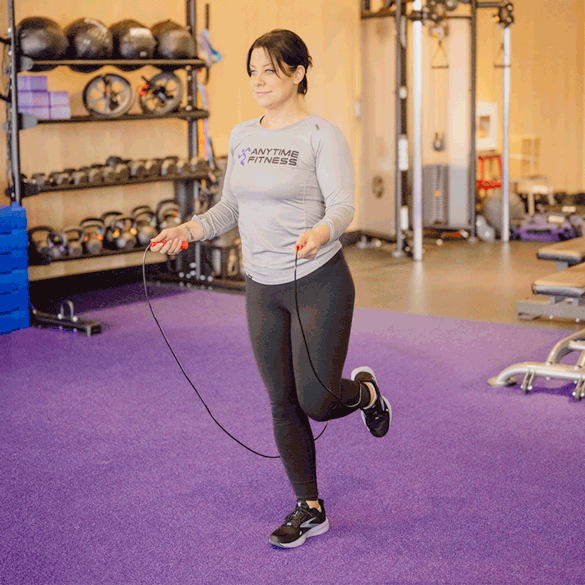
Follow these steps to complete the single leg jump:
- Begin in the same position as the basic jump, with your feet together and arms close to your body.
- Jump up and down on one leg, passing the rope under your foot with each jump.
Tip: Make sure you’re doing an even amount of work on each leg! Try doing five sets of 20 jumps on either leg, with a 30-second rest between each leg.
Skier
The skier is more of a mental challenge than the basic jump — plus, it can help improve your coordination and agility.
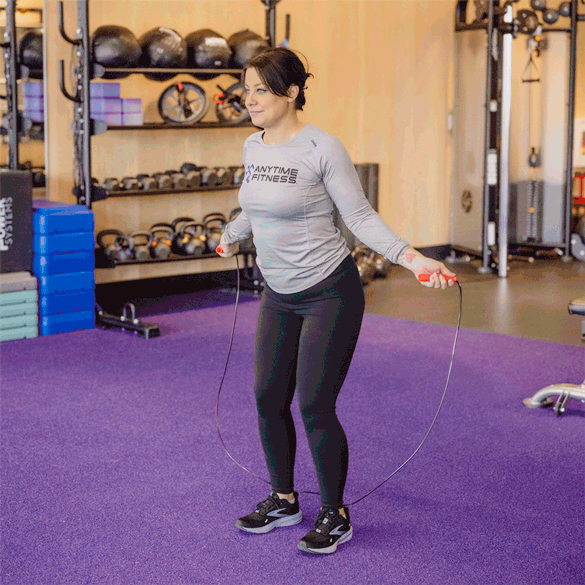
Here’s how to do the skier:
- Begin by performing the basic jump until you’ve gotten into a comfortable rhythm.
- When you’re ready, start jumping side to side on both feet (like a skier going down a hill). Pass the rope under your feet each time you jump from one side to the other. You don’t have to jump far — just a couple inches will do!
Double Unders
Ready for a challenge? Double unders boost your aerobic ability while increasing your strength and explosive power in your legs. Instead of passing the rope under your feet once per jump, you’ll pass the rope under your feet twice each time you jump.
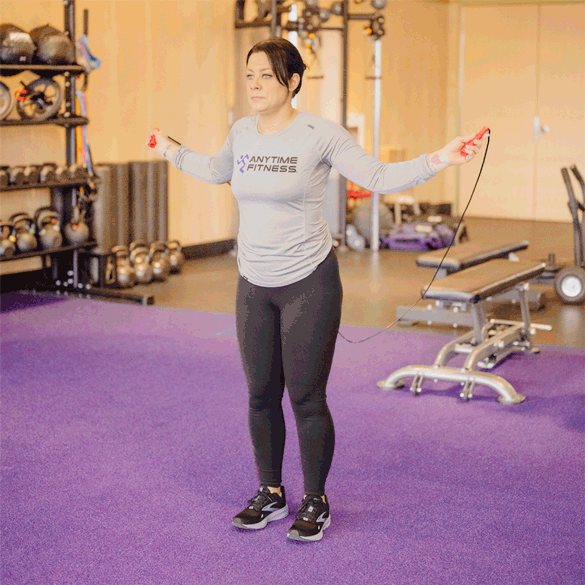
Follow these steps to complete a double under:
- Start with your feet together and your arms close to your sides. Complete a few basic jumps until you are in a comfortable rhythm.
- When you’re ready, swing the rope hard while you jump, allowing it to pass under your feet twice before you land.
Tip: It’s a common mistake to swing the rope twice while you’re in the air, but swinging it hard one time and letting the momentum take the rope around your body twice is more effective — and energy efficient.
Remember to stay patient as you learn new jump rope skills. You may not master them on the first try, and that’s okay! Jumping rope gives you the opportunity to set and achieve new fitness goals — so rewarding!
Looking for more cardio inspiration? Give this 25-minute HIIT bike workout a try next!

